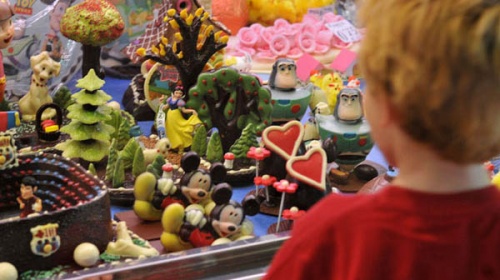Easter eggs and the mona
Easter includes a culinary treat eagerly awaited by the little ones: the mona. Today, after centuries of evolution, the mona de Pasqua is a sweet, normally made of chocolate, that comes in various forms, often related to the annual trends for children. It seems that the word mona could be derived from the Arabic word munah, which means gift.
For a long time, until well into the 20th century, it was traditional for the cake makers and also householders, to make tortells (ring cakes) and coques (a sweet bread) with hard-boiled eggs on the top, which godparents gave to their godchildren on the Sunday of Pasqua Florida (the Feast of Flowers), or the day after. According to tradition, the cake had to have the same number of eggs as the age of the child to which it was given, until they had their first communion. Over time, the eggs became chocolate, and today the mona has become a chocolate figure of any manner of shape or colour: we can find everything from traditional eggs to cartoon characters, animals, and football players. But one thing that many have in common are the coloured goose feathers and little yellow chicks made of felt.
Method
Here is the recipe for a traditional mona.
Ingredients: 500 g flour, 75 g sugar, 50 g butter, 3 eggs, 10 g salt, the zest of one lemon, 50 g compressed yeast and milk.
- For the decoration: Hard-boiled eggs, oil, beaten egg and sugar.
Mix the flour, sugar, eggs, salt, yeast, butter, and lemon zest together.
Add the milk little by little until you have a uniform dough that does not stick to your hands.
Leave it to rest for 30 minutes.
Form the dough into a ball; make a hole in the middle and continue going around, making it bigger, until you make a ring shape.
Brush it with oil and, on the top, push on the hard boiled eggs still in their shells.
Brush it with beaten egg and sprinkle sugar over the top.
Leave it to rise for 20 minutes and then cook it in the oven for 45 minutes at 170 °C.




